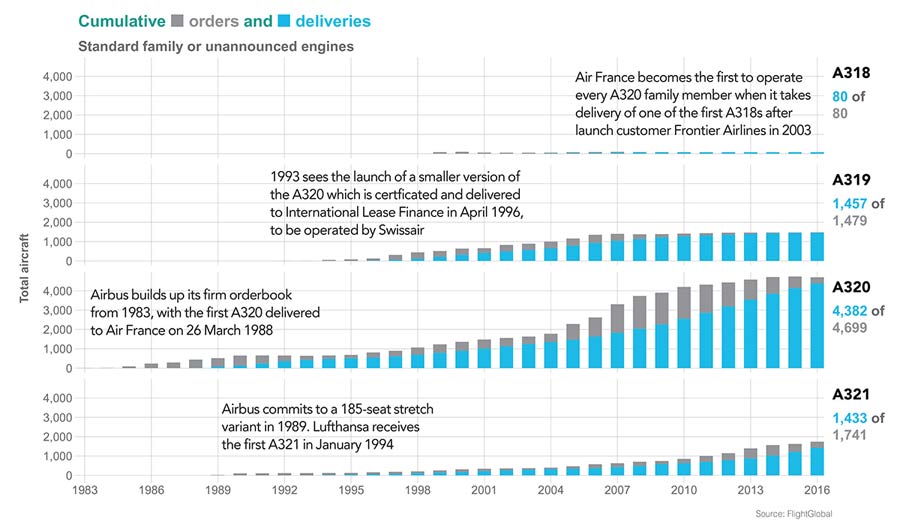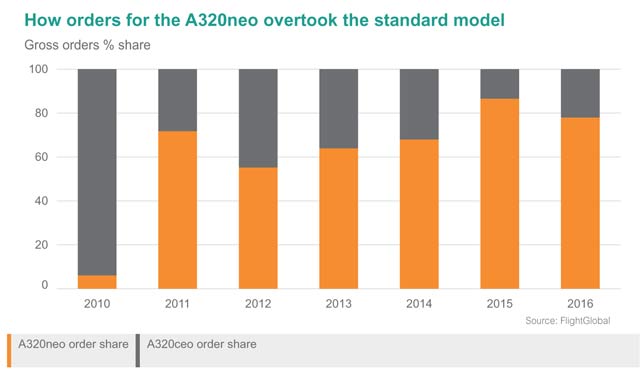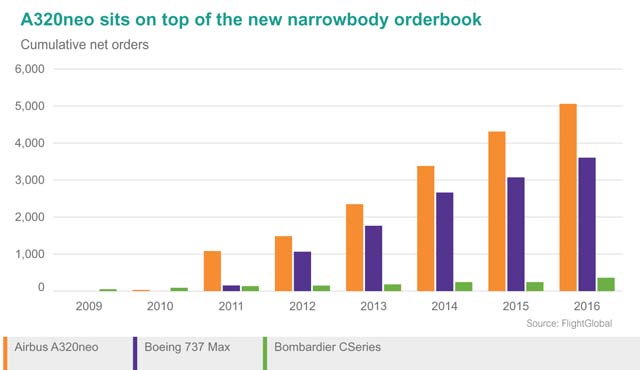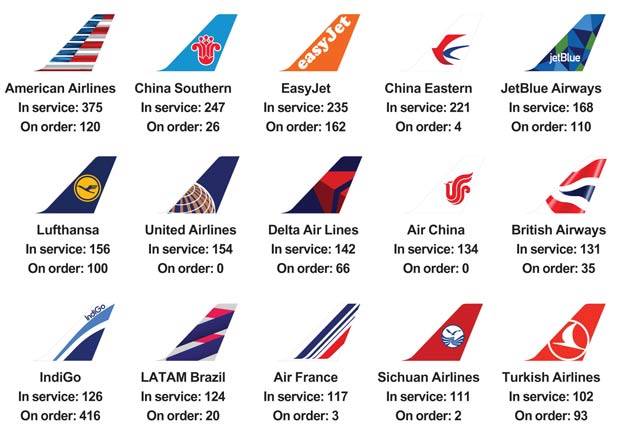By the end of 2016, Airbus had received 13,066 orders and delivered 7,422 A320-family aircraft. With the announcement of a re-engined version in 2010, the airframer refreshed the programme in response to customer demands for lower fuel-burn and competition from Boeing and Bombardier as it aims to stay at the front of the narrowbody market.

Type enhancements
In order to maintain commonality with the standard A320s, reducing costs for customers and its own engineers’ “requirement creep”, Airbus kept enhancements to the addition of blended winglets dubbed “Sharklets” – claiming to reduce fuel burn by 3% – and the choice of new engines from Pratt & Whitney and CFM International. P&W’s PW1100G is a derivative of the geared turbofan used on Bombardier’s CSeries and the Leap-1A from CFM shares enhanced technological characteristics with the Leap-1B engines installed on Boeing’s 737 Max.

Airbus continues to offer A320s powered by CFM56-5B and International Aero Engines V2500s alongside its Neos but deals have tended to swing in favour of the latter since Airbus started taking orders for the new model.
Facing the competition
In 2008 Bombardier firmed up its geared turbofan-equipped CSeries, promising a 20% fuel burn advantage over Airbus and Boeing’s existing single-aisle types. In response Airbus began considering a new engine for its A320 family, with COO John Leahy stating in 2010: “If we don’t re-engine, they will have a niche.”

When Airbus launched the Neo, Boeing was still deliberating side-stepping an interim development in favour of an all-new design. Both manufacturers made decisions to take on Bombardier’s clean-sheet narrowbody with formal launches of their re-engined designs by mid-2011. Since then orders have stacked up for each, with Neo outnumbering Max by 5,059 to 3,605 at the end of 2016. This should keep production lines busy until the mid-2020s.
Top customers
Airbus launched the A320 project at the 1981 Paris air show with orders from French airlines Air France and Air Inter. For the aircraft to have a long-term future it needed support from a non-state, non-French airline – this was British Caledonian, from which it received an order in 1983. BCal later merged with British Airways and, after evaluation, the A320 was retained by the airline which went on to order more of the type and has become one of the largest A320 fleet operators.

As well as being popular with mainline operators like American Airlines and China Southern, the A320 has become one of the primary choices for low-cost carriers. EasyJet, JetBlue and IndiGo have operations based around minimising fleet diversity and have made up the bulk of their fleets with A320s. The versatility of the type has also proved a hit in the ever-growing Asia-Pacific market, with five of the current top 15 operators from that region.
Source: Flight International



















